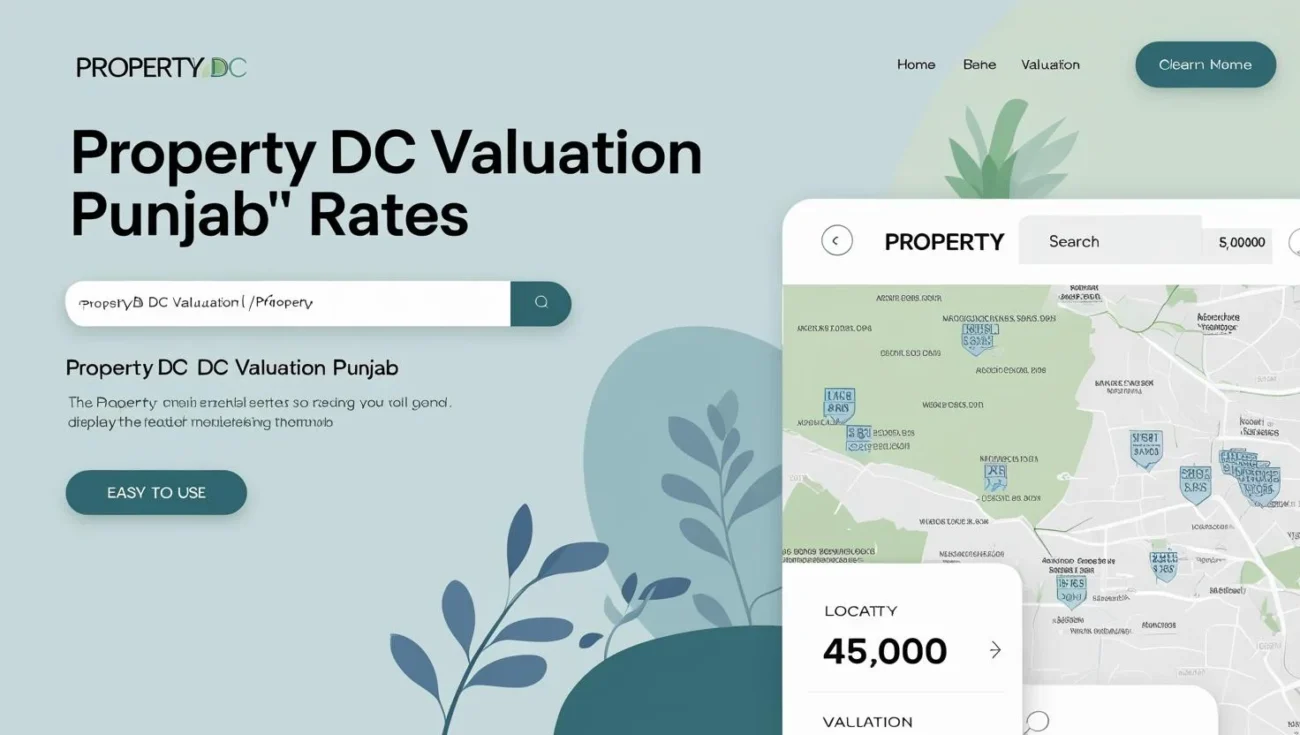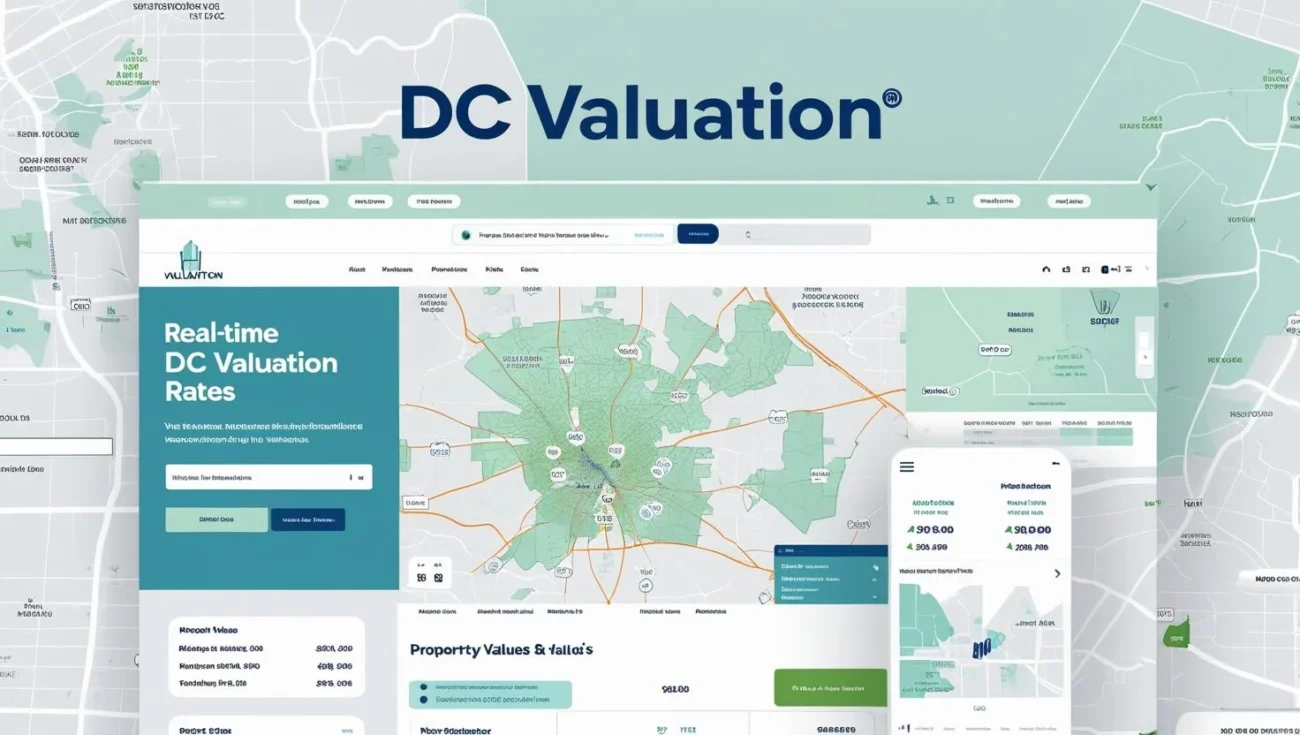Property DC Valuation Punjab associates with the value of land set by the government for tax purposes, registration, and other formal transactions within the region. This assessment is done by each district’s Deputy Commissioner in Punjab, and in most cases, the value of land set is lower than the prevailing market price. DC valuation aims at achieving a standardized value of the property which serves the purpose of uniform tax assessment, registration fee levies, and a benchmark for property transactions. This is crucial in ensuring the law is abided by, aiding collection of revenue, and controlling the property market of Punjab.
Legal Framework
The property DC valuation Punjab has its roots in various provincial and national laws. The valuation is conducted by the Punjab Revenue Department, and the Deputy Commissioners of the Districts are instrumental in its administration. Important legislative acts like the Punjab Land Revenue Act and the Stamp Act of 1899 provide the legal grounds for these property valuations.
The Federal Board of Revenue issues property valuation tables for the entire country. However, the DC rates are instrumental at the provincial level for determining stamp duties and registration fees. The pervasive conflict between the FBR values and DC rates is especially pronounced in metropolitan centers such as Lahore and Rawalpindi, where there are substantial discrepancies between market rates and the DC rates.
Components of DC Valuation
DC valuation Punjab has several salient elements that affect the valuation of a property. Properties are grouped into categories which include residential, commercial, agricultural, and industrial. Each category is further evaluated on parameters such as the property’s location, plot size, road access, proximity to major centers of business, and the level of development in the area. For example, commercial property on major roads in urban centers have a much higher valuation than those in semi-rural areas. DC rates are also higher in urban areas as compared to rural zones owing to inadequate infrastructure, facilities and higher demand in cities.

Process of Setting DC Valuation
The Revenue Department begins the process of determining property DC valuation Punjab with the collection of data. Local officials such as Patwaris and Tehsildars conduct surveys and collect data concerning real estate transactions in different regions. This information is consolidated at the Tehsil level and then sent to the Deputy Commissioner. Upon approval, the DC rates can be published online. These rates are usually revised every year. However, due to political or bureaucratic delays, there are often outdated valuations which result in discrepancies when compared with the current market prices.
Applications of DC Valuation
DC valuation Punjab fulfills an essential function in determining the incurred administrative costs for the Government in the course of a property transaction and for imposing taxes. Other important taxes such as stamp duty, capital value tax (CVT), and withholding tax are based on the property’s valuation. Registration authorities use these valuations to charge fees for property transfer or mutation registration. Additionally, when the government acquires land for public use, compensation is often calculated based on DC valuations. This can sometimes lead to disputes, especially when the DC rates are lower than the actual market prices.
Comparison with Market Rates and FBR Valuation
In property valuation rates, one of the major concerns is the difference between the FBR estimation and the market prices, as well as the DC values. The principal concern with the DC valuation punjab is the drastic disparity between the sales and purchase prices of the properties and the reported valuation. The FBR has attempted to fill this gap by issuing valuation tables, yet the inconsistencies in these figures can create confusion and risks of tax avoidance. To minimize tax responsibilities, property buyers and sellers often declare transaction values close to DC rates, leading to lost tax revenue for the state.
Issues and Challenges
The effectiveness and equity of the DC valuation Punjab system faces numerous problems. The primary concern is the outdated tables with valuations that lag behind the actual market prices. In addition, the opaque and arbitrary property valuation processes devoid of any clear rationale leads to concerns of equity and uniformity. Also, there is the possibility of biased corrupt political favoritism behind property valuations that biased to favor particular individuals or groups. Additionally, the gap that exists between DC rates and the prevailing market rates leads to the suppression of declared property values for the purpose of tax evasion, damaging public confidence in the system.

Reforms and Recommendations
In order to improve the property DC valuation system in Punjab, a number of reforms are required. Most importantly, the digitization of land and property records should be implemented to enable real-time updates and to improve public access to valuation data. Constant updates of DC rate revisions, which are published online, would improve transparency and ensure that the data remains relevant in the socio-economic context. It would further be important to bring valuations in closer alignment with market rates to enhance the tax base and discretionary revenue collected by the government.
Coordination between the FBR and the provincial governments would be useful in designing a single, uniform, and coherent valuation system. Furthermore, the accuracy and objectivity of property assessments would be enhanced by proper training of the revenue staff.
Case Studies / Real Examples
In Lahore, for instance, the DC rate of a commercial property located in a prime location, DHA, is pegged at PKR 30,000 per Marla, when in reality, the market value is well over PKR 500,000 per Marla. This differential is so substantial that it incentivizes buyers to underreport transaction prices, significantly lowering their tax obligations. In contrast, recent attempts to revise DC estimates in Multan and Faisalabad have led to an increased tax burden, which in turn, reduced property transaction volumes. These cases illustrate the profound consequences that property valuation methodologies have on the real estate market and on the economy in general.
What is e Stamp Punjab dc Valuation Rate Online?
E stamp Punjab DC valuation online refers to the digital system used in Punjab, Pakistan, to compute and pay stamp duty via the official e Stamp portal is known as DC valuation online. The system automatically applies the DC valuation punjab rate, which is the minimum value set by the government for real estate transactions, when a user enters information about a property, including its location, size, and type. The portal uses this valuation to determine the precise stamp duty and produce a Challan 32-A, which can be paid at specified banks. Compared to conventional paper stamp papers, the e-stamp is issued digitally and is verifiable online, which speeds up, increases transparency, and improves security.
Property DC Valuation in Sindh
The process of Property DC Valuation Sindh centers on the Deputy Commissioner’s Office of Sindh which periodically assesses property values of multiple districts in the entire province. The process includes evaluation surveys, work from the revenue officers to the local offices, and consultations with other needed parties to establish the foundational valuation of properties which include accounts for residential, commercial, industrial, and agricultural lands. Following the assessment, updated property values are published in official notifications which are used in the calculation of government taxes or other property fees in government transactions.
Standardization of property DC valuation sindh ensures proper legal compliance enhancing law-abiding compliance for Sindh property transactions thus reducing property valuation disputes. The Sindh government improves revenue collection decreasing the odds of property-related fraud. Property owners are better positioned to estimate the value of their property and to comply with law requirements needed to legally transfer, inherit, or sell their property.
It is crucial to keep track of updated Property DC Valuation Sindh rates, especially for real estate practitioners, as the evaluation is crucial in improving land management and strategic planning. Updated valuations ensure the proper collection of taxes and aid in the alignment of government spending with the real estate market. Property valuation in Sindh is crucial for the entire real estate industry.
Conclusion
Property DC valuation Punjab integrates the property assessment and taxation system, functioning as a foundational element for the framework of real estate transactions, particularly with regard to taxation and registration of land. In as much as it has a well-defined approach, the system has its shortcomings, including chronic rate stagnation, undervaluation, lack of transparency, and numerous system inefficiencies.
Implementing reforms of the system through digital maintenance of overridden records, frequent assessment intervals, re-evaluation of rate and value parameters, and legislative reforms could establish an equitable system with greater efficiency for the government and the real estate market. Addressing and overcoming the challenges tackled in this study will create a paradigm shift in the future of property transactions in the Punjab region.


